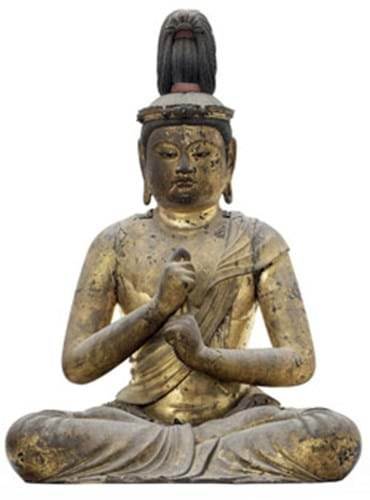
The price far surpasses the previous high of $1.6m, paid for a screen in the same rooms back in 1990 when the Japanese market was last on a roll. The Buddha also eclipsed the auctioneers' pre-sale estimate of $1.5m-2m.
But the 2ft 2in (66cm) high gold lacquered cypress wood sculpture had plenty to recommend such a leap in value.
The statue, which portrays the supreme Buddha Dainichi Nyorai, is a rare early work. It dates from the early Kamakura period (the late 12th early 13th century) and is attributed to Unkei (d.1223) who is regarded as one of the greatest sculptors of the time.
It is a major new addition to the known corpus of his work having been discovered by its vendor in an antique shop seven years ago.
And as if that were not enough, the vendor, who was convinced that the statue was too light to be solid, contacted the Tokyo National Museum who X-rayed it in 2003. They discovered that wired within the body cavity were three precious dedicatory objects that had been sealed inside when it was created 800 years ago.
In Unkei's newly discovered work the sculptor has shown Dainichi in the guise of a Bodhisattva dressed in princely regalia, seated in the lotus position and with his hand raised in a position known as "the knowledge fist".
The concealed objects obviously give important clues to the statue's earlier history but from what can be pieced together so far, the vendor thinks that it was removed from a Buddhist temple during the Meiji period when the government officially adopted the Shinto religion.
It then entered the collection of a prominent family in the Northern part of the Kanto region, where the dealer from whom he acquired it was also based. The concealed objects - a large wood placard with a pagoda-shaped finial, a crystal pagoda and a crystal lotus gem - are Buddhist symbols associated with memorials and it is likely that they are inscribed with the name of the temple or donor and that of the sculptor.
By Anne Crane




